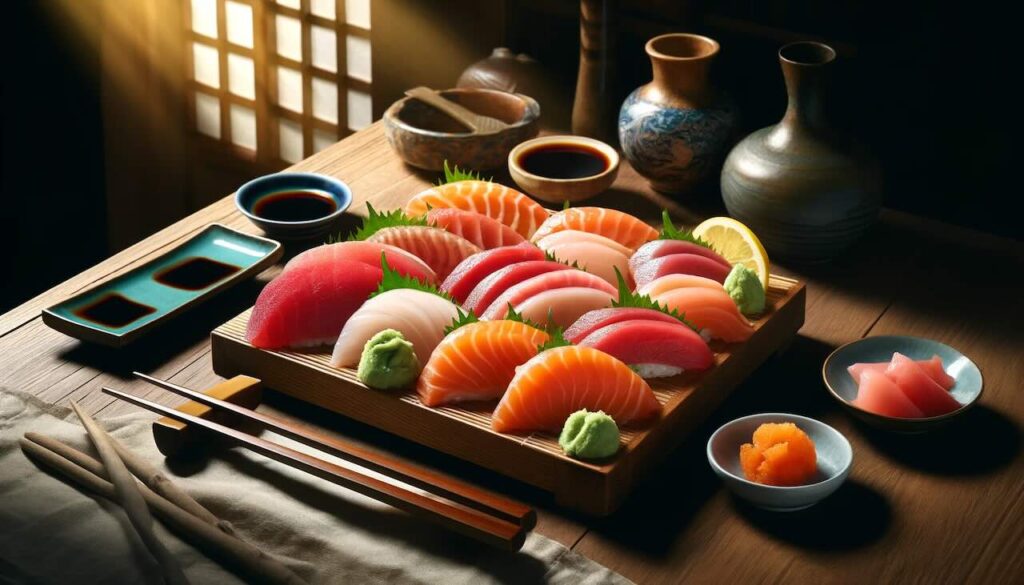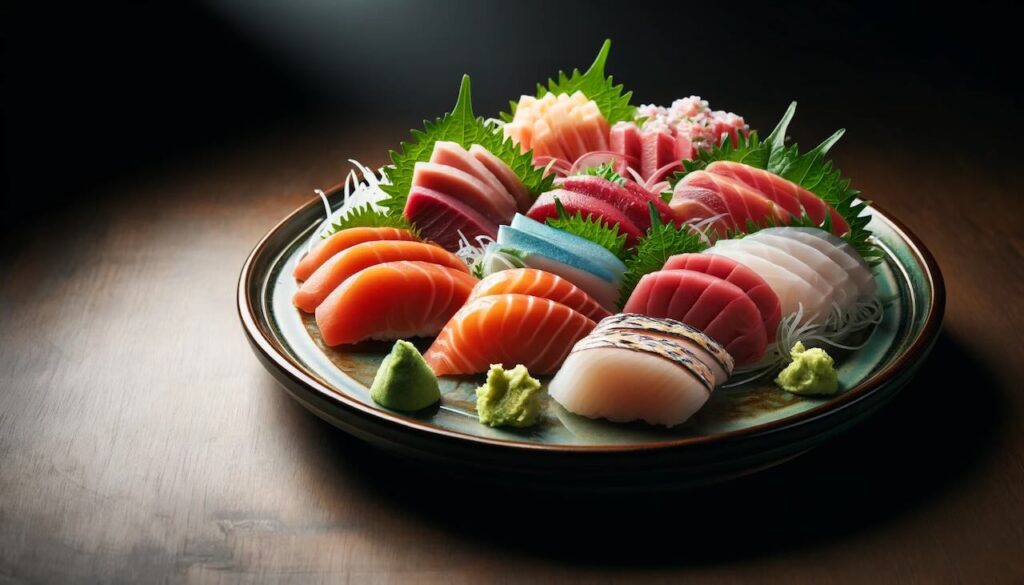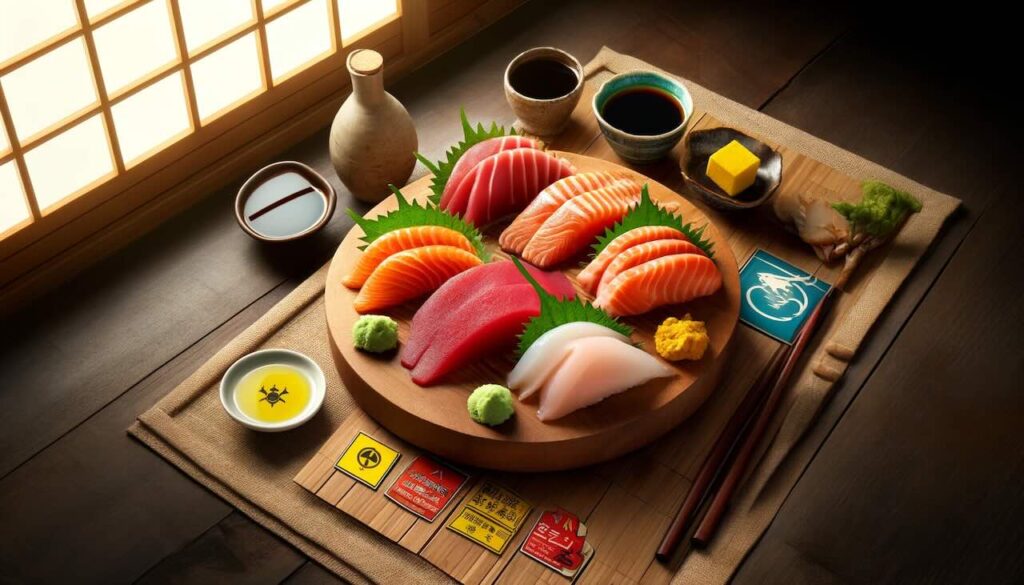Sashimi is far more than simply thin slices of raw fish — it is a deeply refined expression of Japanese food culture, rooted in aesthetic simplicity, seasonal mindfulness, and respect for craftsmanship.
To fully enjoy sashimi as the Japanese do, mastering the proper etiquette enhances not only your dining experience but also your cultural understanding. In this guide, we’ll explore the customs, manners, and subtle techniques that elevate sashimi from a meal to an art form.
For a complete overview of sashimi’s history, health aspects, and cultural significance, visit:
👉 The Complete Guide to Sashimi: Japan’s Art of Raw Fish and Cultural Refinement
The Traditional Order: Tasting from Light to Rich
When presented with an assorted sashimi platter, it’s customary to begin with lighter, more delicate flavors and gradually progress to richer, fattier cuts. This allows your palate to fully appreciate the subtle flavor differences without overwhelming your senses.
Common recommended sequence:
- White-fleshed fish (e.g. flounder, snapper)
- Squid and octopus
- Lean red fish (e.g. lean tuna or bonito)
- Fatty fish (e.g. salmon)
- Toro (fatty tuna belly)
While not a strict rule, following this order reflects the Japanese principle of harmony (wa) in dining — savoring ingredients in a way that respects their natural flavor balance.
Soy Sauce: Apply with Care
In Japan, soy sauce is used to enhance — not mask — the taste of the fish. Proper application is part of the art.
- Instead of soaking your sashimi in soy sauce, lightly brush or dip the fish-side only into the sauce to preserve the delicate flavor and texture.
- Pour a small amount into your personal soy dish. Avoid overfilling, which may be seen as wasteful.
- If you’re dining at a high-end sushi-ya or kaiseki restaurant, the chef may season the sashimi for you — in which case, additional soy sauce is unnecessary.
For more on pairing soy sauce and wasabi, visit:
👉 Why Is Wasabi Served with Sashimi? Unveiling the Secrets Behind This Classic Pairing
Wasabi: Balance, Not Overpower
Wasabi is traditionally placed directly on the fish rather than mixed into the soy sauce.
- Apply a small dab of wasabi to each slice just before eating.
- Adjust the amount to your personal taste — but avoid using excessive wasabi, as it can overpower the delicate flavors.
- If preferred, you may mix a tiny bit of wasabi into your soy sauce for certain fish, but purists generally recommend applying it directly to the sashimi.
The subtle heat of wasabi serves both as a flavor enhancer and a traditional antibacterial agent — part of sashimi’s thoughtful balance between taste and safety.
Chopstick Manners: Graceful Handling
Proper chopstick etiquette reflects respect for both the chef’s craftsmanship and the cultural aesthetic of sashimi dining.
- Use the tips of your chopsticks to gently lift the sashimi slice, avoiding pinching or stabbing.
- Do not pierce the sashimi vertically, as this damages the presentation and is considered poor form.
- Never wave, point, or gesture with chopsticks while holding food.
If you struggle to grasp the thin slices cleanly, it’s perfectly acceptable to support the piece by slightly resting it against the soy sauce dish while dipping.
Mindful Dining: Quiet Appreciation
Japanese dining culture encourages quiet, attentive enjoyment of refined dishes like sashimi:
- Avoid excessive conversation while actively chewing.
- Refrain from speaking with food in your mouth.
- Appreciate the textures and subtleties of each bite in silence or soft conversation.
- Express your gratitude simply with “Itadakimasu” before eating and “Gochisousama deshita” after the meal.
This mindful approach reflects broader Japanese values of respect, gratitude, and presence in the moment.
For deeper insight into how sashimi connects to global raw fish traditions, visit:
👉 Sashimi and the Global Culture of Raw Fish: How Japan’s Delicacy Connects to a Worldwide Tradition
Conclusion
Mastering sashimi etiquette is not merely about following rules — it’s about aligning with centuries-old Japanese cultural values of harmony, craftsmanship, and seasonal appreciation.
By observing proper order, handling soy sauce and wasabi with care, practicing gentle chopstick use, and embracing mindful dining, you elevate your experience beyond taste alone.
Through this quiet ritual, sashimi becomes more than food — it becomes a cultural window into Japan’s enduring pursuit of balance, respect, and refined simplicity.


